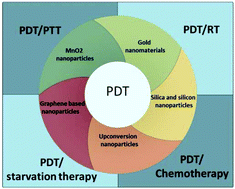Recent research progress in the construction of active free radical nanoreactors and their applications in photodynamic therapy
Abstract
Photodynamic therapy is the most important treatment strategy in free radical therapy. However, tumor microenvironment hypoxia is a key obstacle in PDT. In order to overcome this obstacle, the strategy of in situ production of O2/radicals by catalytic reaction in solid tumors was proposed. In recent years, it has been found that there are many oxygen-independent carbon-based free radicals that can generate toxic active free radicals under laser irradiation and lead to tumor cell death. Based on the rational design of multifunctional nano-medicine, the active free radical nano-generator has opened up a new way for the highly developed nanotechnology and tumor cooperative therapy to improve the therapeutic effect. In this paper, the research status of active free radical nano-generators, especially reactive oxygen species, including the construction mechanism of active free radical nanomaterials, is reviewed and the application of free radical nano-generators in tumor therapy is emphasized.



 Please wait while we load your content...
Please wait while we load your content...